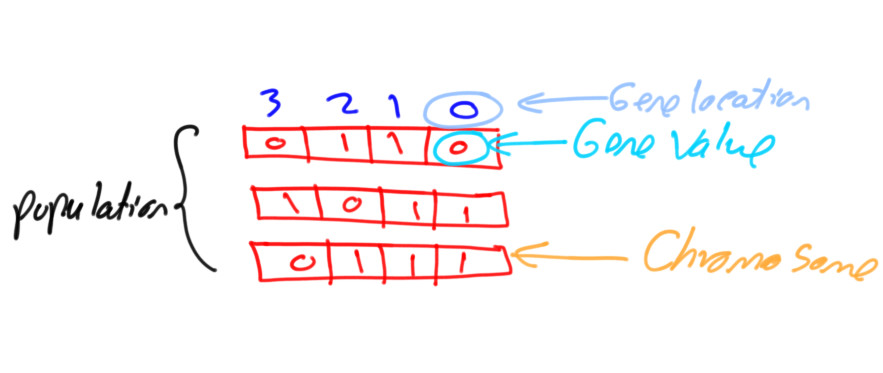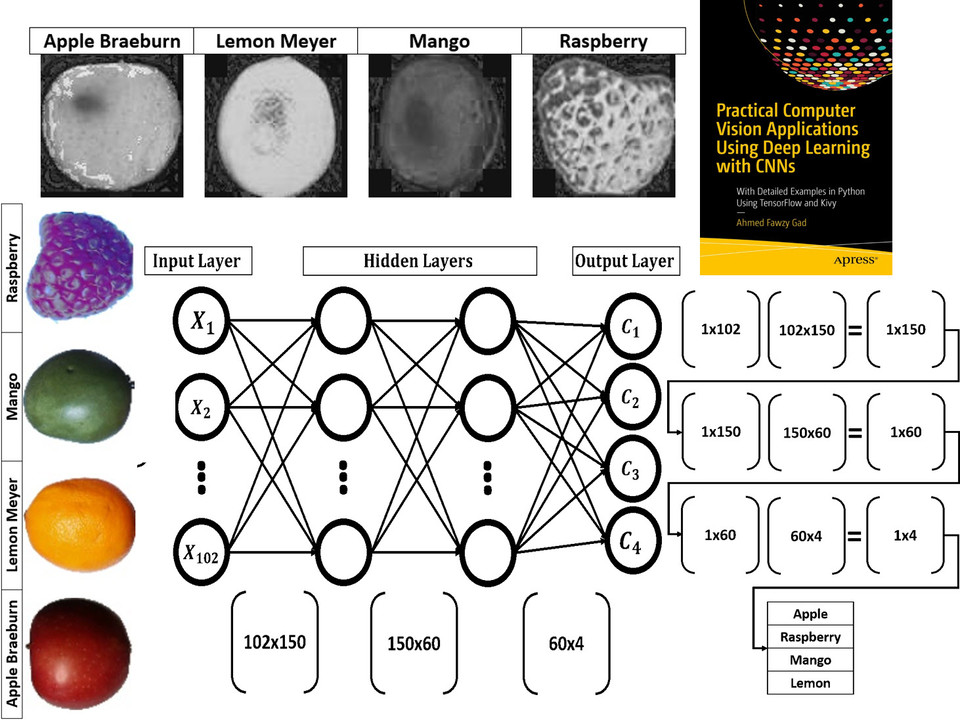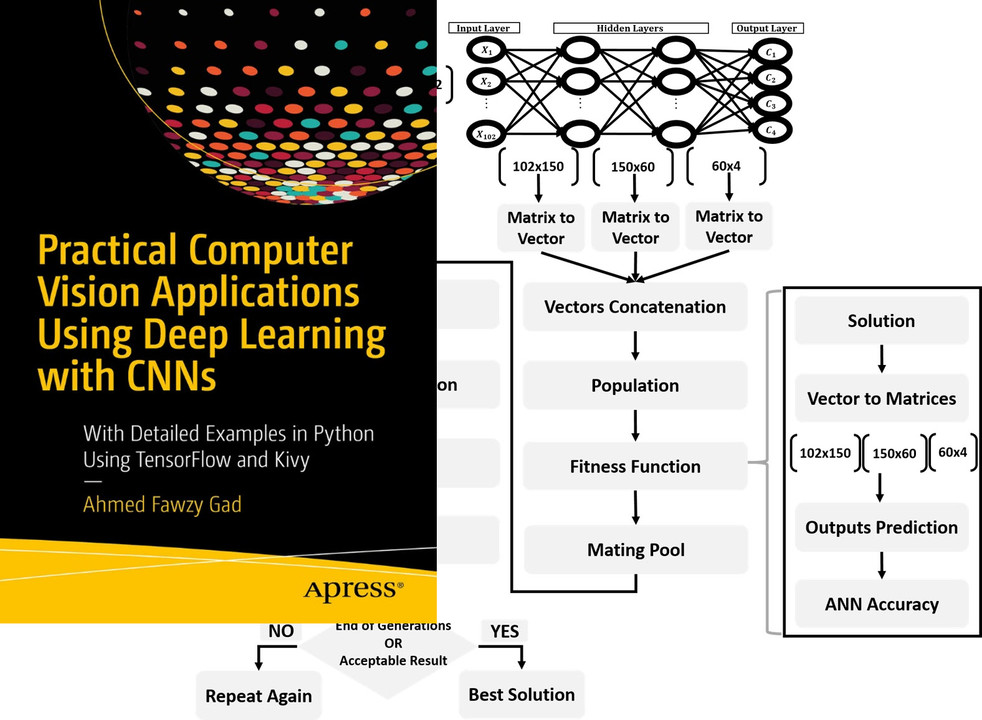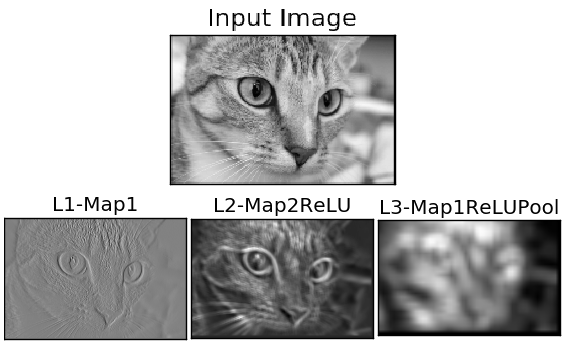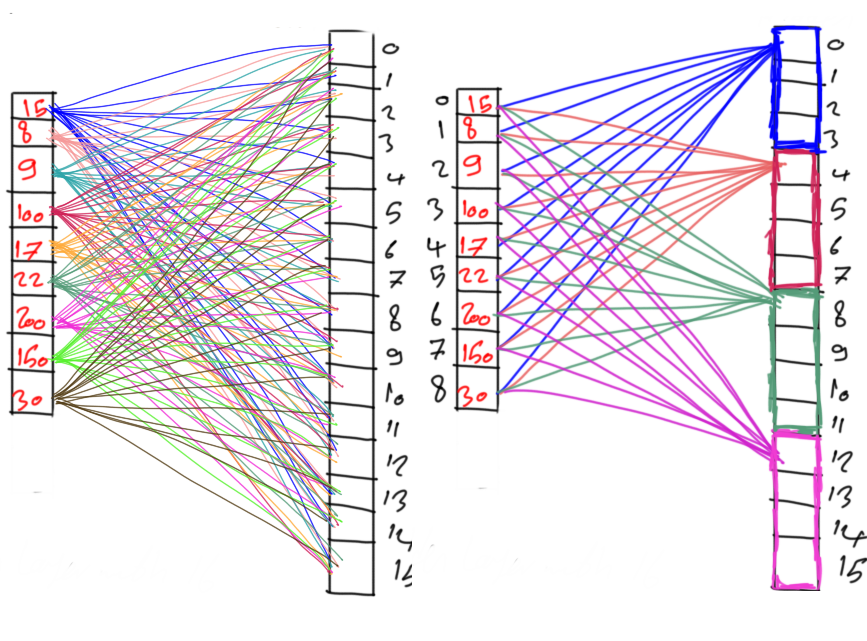
GeneticAlgorithmPython
Source code of PyGAD, a Python 3 library for building the genetic algorithm and training machine learning algorithms (Keras & PyTorch).
BSD-3-CLAUSE License
Bot releases are hidden (Show)
- After the last generation and before the
run()method completes, update the 2 instance attributes: 1)last_generation_parents2)last_generation_parents_indices. This is to keep the list of parents up-to-date with the latest population fitnesslast_generation_fitness. https://github.com/ahmedfgad/GeneticAlgorithmPython/issues/275 - 4 methods with names starting with
run_. Their purpose is to keep the main loop inside therun()method clean. Check the [Other Methods](https://pygad.readthedocs.io/en/latest/pygad.html#other-methods) section for more information.
Published by ahmedfgad 9 months ago
Release Date 29 January 2024
- Solve bugs when multi-objective optimization is used. https://github.com/ahmedfgad/GeneticAlgorithmPython/issues/238
- When the
stop_ciiteriaparameter is used with thereachkeyword, then multiple numeric values can be passed when solving a multi-objective problem. For example, if a problem has 3 objective functions, thenstop_criteria="reach_10_20_30"means the GA stops if the fitness of the 3 objectives are at least 10, 20, and 30, respectively. The number values must match the number of objective functions. If a single value found (e.g.stop_criteria=reach_5) when solving a multi-objective problem, then it is used across all the objectives. https://github.com/ahmedfgad/GeneticAlgorithmPython/issues/238 - The
delay_after_genparameter is now deprecated and will be removed in a future release. If it is necessary to have a time delay after each generation, then assign a callback function/method to theon_generationparameter to pause the evolution. - Parallel processing now supports calculating the fitness during adaptive mutation. https://github.com/ahmedfgad/GeneticAlgorithmPython/issues/201
- The population size can be changed during runtime by changing all the parameters that would affect the size of any thing used by the GA. For more information, check the [Change Population Size during Runtime](https://pygad.readthedocs.io/en/latest/pygad_more.html#change-population-size-during-runtime) section. https://github.com/ahmedfgad/GeneticAlgorithmPython/discussions/234
- When a dictionary exists in the
gene_spaceparameter without a step, then mutation occurs by adding a random value to the gene value. The random vaue is generated based on the 2 parametersrandom_mutation_min_valandrandom_mutation_max_val. For more information, check the [How Mutation Works with the gene_space Parameter?](https://pygad.readthedocs.io/en/latest/pygad_more.html#how-mutation-works-with-the-gene-space-parameter) section. https://github.com/ahmedfgad/GeneticAlgorithmPython/issues/229 - Add
objectas a supported data type for int (GA.supported_int_types) and float (GA.supported_float_types). https://github.com/ahmedfgad/GeneticAlgorithmPython/issues/174 - Use the
raiseclause instead of thesys.exit(-1)to terminate the execution. https://github.com/ahmedfgad/GeneticAlgorithmPython/issues/213 - Fix a bug when multi-objective optimization is used with batch fitness calculation (e.g.
fitness_batch_sizeset to a non-zero number). - Fix a bug in the
pygad.pyscript when finding the index of the best solution. It does not work properly with multi-objective optimization whereself.best_solutions_fitnesshave multiple columns.
self.best_solution_generation = numpy.where(numpy.array(
self.best_solutions_fitness) == numpy.max(numpy.array(self.best_solutions_fitness)))[0][0]
Published by ahmedfgad about 1 year ago
- A new module
pygad.utils.nsga2is created that has theNSGA2class that includes the functionalities of NSGA-II. The class has these methods: 1)get_non_dominated_set()2)non_dominated_sorting()3)crowding_distance()4)sort_solutions_nsga2(). Check [this section](https://pygad.readthedocs.io/en/latest/pygad_more.html#multi-objective-optimization) for an example. - Support of multi-objective optimization using Non-Dominated Sorting Genetic Algorithm II (NSGA-II) using the
NSGA2class in thepygad.utils.nsga2module. Just return alist,tuple, ornumpy.ndarrayfrom the fitness function and the library will consider the problem as multi-objective optimization. All the objectives are expected to be maximization. Check [this section](https://pygad.readthedocs.io/en/latest/pygad_more.html#multi-objective-optimization) for an example. - The parent selection methods and adaptive mutation are edited to support multi-objective optimization.
- Two new NSGA-II parent selection methods are supported in the
pygad.utils.parent_selectionmodule: 1) Tournament selection for NSGA-II 2) NSGA-II selection. - The
plot_fitness()method in thepygad.plotmodule has a new optional parameter namedlabelto accept the label of the plots. This is only used for multi-objective problems. Otherwise, it is ignored. It defaults toNoneand accepts alist,tuple, ornumpy.ndarray. The labels are used in a legend inside the plot. - The default color in the methods of the
pygad.plotmodule is changed to the greenish#64f20ccolor. - A new instance attribute named
pareto_frontsadded to thepygad.GAinstances that holds the pareto fronts when solving a multi-objective problem. - The
gene_typeaccepts alist,tuple, ornumpy.ndarrayfor integer data types given that the precision is set toNone(e.g.gene_type=[float, [int, None]]). - In the
cal_pop_fitness()method, the fitness value is re-used ifsave_best_solutions=Trueand the solution is found in thebest_solutionsattribute. These parameters also can help re-using the fitness of a solution instead of calling the fitness function:keep_elitism,keep_parents, andsave_solutions. - The value
99999999999is replaced byfloat('inf')in the 2 methodswheel_cumulative_probs()andstochastic_universal_selection()inside thepygad.utils.parent_selection.ParentSelectionclass. - The
plot_result()method in thepygad.visualize.plot.Plotclass is removed. Instead, please use theplot_fitness()if you did not upgrade yet.
Published by ahmedfgad over 1 year ago
Release Date 20 June 2023
- Fix a bug when the initial population has duplciate genes if a nested gene space is used.
- The
gene_spaceparameter can no longer be assigned a tuple. - Fix a bug when the
gene_spaceparameter has a member of typetuple. - A new instance attribute called
gene_space_unpackedwhich has the unpackedgene_space. It is used to solve duplicates. For infinite ranges in thegene_space, they are unpacked to a limited number of values (e.g. 100). - Bug fixes when creating the initial population using
gene_spaceattribute. - When a
dictis used with thegene_spaceattribute, the new gene value was calculated by summing 2 values: 1) the value sampled from thedict2) a random value returned from the random mutation range defined by the 2 parametersrandom_mutation_min_valandrandom_mutation_max_val. This might cause the gene value to exceed the range limit defined in thegene_space. To respect thegene_spacerange, this release only returns the value from thedictwithout summing it to a random value. - Formatting the strings using f-string instead of the
format()method. https://github.com/ahmedfgad/GeneticAlgorithmPython/pull/189 - In the
__init__()of thepygad.GAclass, the logged error messages are handled using atry-exceptblock instead of repeating thelogger.error()command. https://github.com/ahmedfgad/GeneticAlgorithmPython/pull/189 - A new class named
CustomLoggeris created in thepygad.cnnmodule to create a default logger using theloggingmodule assigned to theloggerattribute. This class is extended in all other classes in the module. The constructors of these classes have a new parameter namedloggerwhich defaults toNone. If no logger is passed, then the default logger in theCustomLoggerclass is used. - Except for the
pygad.nnmodule, theprint()function in all other modules are replaced by theloggingmodule to log messages. - The callback functions/methods
on_fitness(),on_parents(),on_crossover(), andon_mutation()can return values. These returned values override the corresponding properties. The output ofon_fitness()overrides the population fitness. Theon_parents()function/method must return 2 values representing the parents and their indices. The output ofon_crossover()overrides the crossover offspring. The output ofon_mutation()overrides the mutation offspring. - Fix a bug when adaptive mutation is used while
fitness_batch_size>1. https://github.com/ahmedfgad/GeneticAlgorithmPython/issues/195 - When
allow_duplicate_genes=Falseand a user-definedgene_spaceis used, it sometimes happen that there is no room to solve the duplicates between the 2 genes by simply replacing the value of one gene by another gene. This release tries to solve such duplicates by looking for a third gene that will help in solving the duplicates. These examples explain how it works. Check [this section](https://pygad.readthedocs.io/en/latest/pygad.html#prevent-duplicates-in-gene-values) for more information. - Use probabilities to select parents using the rank parent selection method. https://github.com/ahmedfgad/GeneticAlgorithmPython/discussions/205
- The 2 parameters
random_mutation_min_valandrandom_mutation_max_valcan accept iterables (list/tuple/numpy.ndarray) with length equal to the number of genes. This enables customizing the mutation range for each individual gene. https://github.com/ahmedfgad/GeneticAlgorithmPython/discussions/198 - The 2 parameters
init_range_lowandinit_range_highcan accept iterables (list/tuple/numpy.ndarray) with length equal to the number of genes. This enables customizing the initial range for each individual gene when creating the initial population. - The
dataparameter in thepredict()function of thepygad.kerasgamodule can be assigned a data generator. https://github.com/ahmedfgad/GeneticAlgorithmPython/issues/115 https://github.com/ahmedfgad/GeneticAlgorithmPython/issues/207 - The
predict()function of thepygad.kerasgamodule accepts 3 optional parameters: 1)batch_size=None,verbose=0, andsteps=None. Check documentation of the [Keras Model.predict()](https://keras.io/api/models/model_training_apis) method for more information. https://github.com/ahmedfgad/GeneticAlgorithmPython/issues/207 - The documentation is updated to explain how mutation works when
gene_spaceis used withintorfloatdata types. Check [this section](https://pygad.readthedocs.io/en/latest/pygad.html#limit-the-gene-value-range-using-the-gene-space-parameter). https://github.com/ahmedfgad/GeneticAlgorithmPython/discussions/198
Published by ahmedfgad over 1 year ago
Fix an issue with passing user-defined function/method for parent selection. https://github.com/ahmedfgad/GeneticAlgorithmPython/issues/179
Published by ahmedfgad over 1 year ago
This release has a major change where the fitness function accepts a mandatory parameter referring to the instance of the pygad.GA class.
This is the release notes:
- The structure of the library is changed and some methods defined in the
pygad.pymodule are moved to thepygad.utils,pygad.helper, andpygad.visualizesubmodules. - The
pygad.utils.parent_selectionmodule has a class namedParentSelectionwhere all the parent selection operators exist. Thepygad.GAclass extends this class. - The
pygad.utils.crossovermodule has a class namedCrossoverwhere all the crossover operators exist. Thepygad.GAclass extends this class. - The
pygad.utils.mutationmodule has a class namedMutationwhere all the mutation operators exist. Thepygad.GAclass extends this class. - The
pygad.helper.uniquemodule has a class namedUniquesome helper methods exist to solve duplicate genes and make sure every gene is unique. Thepygad.GAclass extends this class. - The
pygad.visualize.plotmodule has a class namedPlotwhere all the methods that create plots exist. Thepygad.GAclass extends this class.
...
class GA(utils.parent_selection.ParentSelection,
utils.crossover.Crossover,
utils.mutation.Mutation,
helper.unique.Unique,
visualize.plot.Plot):
...
- Support of using the
loggingmodule to log the outputs to both the console and text file instead of using theprint()function. This is by assigning thelogging.Loggerto the newloggerparameter. Check the [Logging Outputs](https://pygad.readthedocs.io/en/latest/README_pygad_ReadTheDocs.html#logging-outputs) for more information. - A new instance attribute called
loggerto save the logger. - The function/method passed to the
fitness_funcparameter accepts a new parameter that refers to the instance of thepygad.GAclass. Check this for an example: [Use Functions and Methods to Build Fitness Function and Callbacks](https://pygad.readthedocs.io/en/latest/README_pygad_ReadTheDocs.html#use-functions-and-methods-to-build-fitness-and-callbacks). https://github.com/ahmedfgad/GeneticAlgorithmPython/issues/163 - Update the documentation to include an example of using functions and methods to calculate the fitness and build callbacks. Check this for more details: [Use Functions and Methods to Build Fitness Function and Callbacks](https://pygad.readthedocs.io/en/latest/README_pygad_ReadTheDocs.html#use-functions-and-methods-to-build-fitness-and-callbacks). https://github.com/ahmedfgad/GeneticAlgorithmPython/pull/92#issuecomment-1443635003
- Validate the value passed to the
initial_populationparameter. - Validate the type and length of the
pop_fitnessparameter of thebest_solution()method. - Some edits in the documentation. https://github.com/ahmedfgad/GeneticAlgorithmPython/issues/106
- Fix an issue when building the initial population as (some) genes have their value taken from the mutation range (defined by the parameters
random_mutation_min_valandrandom_mutation_max_val) instead of using the parametersinit_range_lowandinit_range_high. - The
summary()method returns the summary as a single-line string. Just log/print the returned string it to see it properly. - The
callback_generationparameter is removed. Use theon_generationparameter instead. - There was an issue when using the
parallel_processingparameter with Keras and PyTorch. As Keras/PyTorch are not thread-safe, thepredict()method gives incorrect and weird results when more than 1 thread is used. https://github.com/ahmedfgad/GeneticAlgorithmPython/issues/145 https://github.com/ahmedfgad/TorchGA/issues/5 https://github.com/ahmedfgad/KerasGA/issues/6. Thanks to this [StackOverflow answer](https://stackoverflow.com/a/75606666/5426539). - Replace
numpy.floatbyfloatin the 2 parent selection operators roulette wheel and stochastic universal. https://github.com/ahmedfgad/GeneticAlgorithmPython/pull/168
Published by ahmedfgad over 1 year ago
- Fix an issue when paralell processing was used where the elitism solutions' fitness values are not re-used. https://github.com/ahmedfgad/GeneticAlgorithmPython/issues/160#issuecomment-1441718184
Published by ahmedfgad over 1 year ago
- A new
summary()method is supported to return a Keras-like summary of the PyGAD lifecycle. - A new optional parameter called
fitness_batch_sizeis supported to calculate the fitness function in batches. If it is assigned the value1orNone(default), then the normal flow is used where the fitness function is called for each individual solution. If thefitness_batch_sizeparameter is assigned a value satisfying this condition1 < fitness_batch_size <= sol_per_pop, then the solutions are grouped into batches of sizefitness_batch_sizeand the fitness function is called once for each batch. In this case, the fitness function must return a list/tuple/numpy.ndarray with a length equal to the number of solutions passed. https://github.com/ahmedfgad/GeneticAlgorithmPython/issues/136. - The
cloudpicklelibrary (https://github.com/cloudpipe/cloudpickle) is used instead of thepicklelibrary to pickle thepygad.GAobjects. This solves the issue of having to redefine the functions (e.g. fitness function). Thecloudpicklelibrary is added as a dependancy in therequirements.txtfile. https://github.com/ahmedfgad/GeneticAlgorithmPython/issues/159 - Support of assigning methods to these parameters:
fitness_func,crossover_type,mutation_type,parent_selection_type,on_start,on_fitness,on_parents,on_crossover,on_mutation,on_generation, andon_stop. https://github.com/ahmedfgad/GeneticAlgorithmPython/pull/92 https://github.com/ahmedfgad/GeneticAlgorithmPython/issues/138 - Validating the output of the parent selection, crossover, and mutation functions.
- The built-in parent selection operators return the parent's indices as a NumPy array.
- The outputs of the parent selection, crossover, and mutation operators must be NumPy arrays.
- Fix an issue when
allow_duplicate_genes=True. https://github.com/ahmedfgad/GeneticAlgorithmPython/issues/39 - Fix an issue creating scatter plots of the solutions' fitness.
- Sampling from a
set()is no longer supported in Python 3.11. Instead, sampling happens from alist(). ThanksMarco Brennafor pointing to this issue. - The lifecycle is updated to reflect that the new population's fitness is calculated at the end of the lifecycle not at the beginning. https://github.com/ahmedfgad/GeneticAlgorithmPython/issues/154#issuecomment-1438739483
- There was an issue when
save_solutions=Truethat causes the fitness function to be called for solutions already explored and have their fitness pre-calculated. https://github.com/ahmedfgad/GeneticAlgorithmPython/issues/160 - A new instance attribute named
last_generation_elitism_indicesadded to hold the indices of the selected elitism. This attribute helps to re-use the fitness of the elitism instead of calling the fitness function. - Fewer calls to the
best_solution()method which in turns saves some calls to the fitness function. - Some updates in the documentation to give more details about the
cal_pop_fitness()method. https://github.com/ahmedfgad/GeneticAlgorithmPython/issues/79#issuecomment-1439605442
Published by ahmedfgad over 1 year ago
Published by ahmedfgad over 1 year ago
PyGAD 2.18.2 release notes
- Remove
numpy.intandnumpy.floatfrom the list of supported data types. https://github.com/ahmedfgad/GeneticAlgorithmPython/issues/151 https://github.com/ahmedfgad/GeneticAlgorithmPython/pull/152 - Call the
on_crossover()callback function even ifcrossover_typeisNone. https://github.com/ahmedfgad/GeneticAlgorithmPython/issues/138 - Call the
on_mutation()callback function even ifmutation_typeisNone. https://github.com/ahmedfgad/GeneticAlgorithmPython/issues/138
Published by ahmedfgad about 2 years ago
PyGAD 2.18.1
- A big fix when
keep_elitismis used. https://github.com/ahmedfgad/GeneticAlgorithmPython/issues/132
Published by ahmedfgad about 2 years ago
- Raise an exception if the sum of fitness values is zero while either roulette wheel or stochastic universal parent selection is used. https://github.com/ahmedfgad/GeneticAlgorithmPython/issues/129
- Initialize the value of the
run_completedproperty toFalse. https://github.com/ahmedfgad/GeneticAlgorithmPython/issues/122 - The values of these properties are no longer reset with each call to the
run()methodself.best_solutions, self.best_solutions_fitness, self.solutions, self.solutions_fitness: https://github.com/ahmedfgad/GeneticAlgorithmPython/issues/123. Now, the user can have the flexibility of calling therun()method more than once while extending the data collected after each generation. Another advantage happens when the instance is loaded and therun()method is called, as the old fitness value are shown on the graph alongside with the new fitness values. Read more in this section: [Continue without Loosing Progress](https://pygad.readthedocs.io/en/latest/README_pygad_ReadTheDocs.html#continue-without-loosing-progress) - Thanks [Prof. Fernando Jiménez Barrionuevo](http://webs.um.es/fernan) (Dept. of Information and Communications Engineering, University of Murcia, Murcia, Spain) for editing this [comment](https://github.com/ahmedfgad/GeneticAlgorithmPython/blob/5315bbec02777df96ce1ec665c94dece81c440f4/pygad.py#L73) in the code. https://github.com/ahmedfgad/GeneticAlgorithmPython/commit/5315bbec02777df96ce1ec665c94dece81c440f4
- A bug fixed when
crossover_type=None. - Support of elitism selection through a new parameter named
keep_elitism. It defaults to 1 which means for each generation keep only the best solution in the next generation. If assigned 0, then it has no effect. Read more in this section: [Elitism Selection](https://pygad.readthedocs.io/en/latest/README_pygad_ReadTheDocs.html#elitism-selection). https://github.com/ahmedfgad/GeneticAlgorithmPython/issues/74 - A new instance attribute named
last_generation_elitismadded to hold the elitism in the last generation. - A new parameter called
random_seedadded to accept a seed for the random function generators. Credit to this issue https://github.com/ahmedfgad/GeneticAlgorithmPython/issues/70 and [Prof. Fernando Jiménez Barrionuevo](http://webs.um.es/fernan). Read more in this section: [Random Seed](https://pygad.readthedocs.io/en/latest/README_pygad_ReadTheDocs.html#random-seed). - Editing the
pygad.TorchGAmodule to make sure the tensor data is moved from GPU to CPU. Thanks to Rasmus Johansson for opening this pull request: https://github.com/ahmedfgad/TorchGA/pull/2
Published by ahmedfgad over 2 years ago
PyGAD 2.17.0
Release Date: 8 July 2022
- An issue is solved when the
gene_spaceparameter is given a fixed value. e.g. gene_space=[range(5), 4]. The second gene's value is static (4) which causes an exception. - Fixed the issue where the
allow_duplicate_genesparameter did not work when mutation is disabled (i.e.mutation_type=None). This is by checking for duplicates after crossover directly. https://github.com/ahmedfgad/GeneticAlgorithmPython/issues/39 - Solve an issue in the
tournament_selection()method as the indices of the selected parents were incorrect. https://github.com/ahmedfgad/GeneticAlgorithmPython/issues/89 - Reuse the fitness values of the previously explored solutions rather than recalculating them. This feature only works if
save_solutions=True. - Parallel processing is supported. This is by the introduction of a new parameter named
parallel_processingin the constructor of thepygad.GAclass. Thanks to [@windowshopr](https://github.com/windowshopr) for opening the issue [#78](https://github.com/ahmedfgad/GeneticAlgorithmPython/issues/78) at GitHub. Check the [Parallel Processing in PyGAD](https://pygad.readthedocs.io/en/latest/README_pygad_ReadTheDocs.html#parallel-processing-in-pygad) section for more information and examples.
Published by ahmedfgad over 2 years ago
Changes in PyGAD 2.16.3
- A new instance attribute called
previous_generation_fitnessadded in thepygad.GAclass. It holds the fitness values of one generation before the fitness values saved in thelast_generation_fitness. - Issue in the
cal_pop_fitness()method in getting the correct indices of the previous parents. This is solved by using the previous generation's fitness saved in the new attributeprevious_generation_fitnessto return the parents' fitness values. Thanks to Tobias Tischhauser (M.Sc. - [Mitarbeiter Institut EMS, Departement Technik, OST – Ostschweizer Fachhochschule, Switzerland](https://www.ost.ch/de/forschung-und-dienstleistungen/technik/systemtechnik/ems/team)) for detecting this bug. - Validate the fitness value returned from the fitness function. An exception is raised if something is wrong. https://github.com/ahmedfgad/GeneticAlgorithmPython/issues/67
Published by ahmedfgad about 3 years ago
- Reuse the fitness of previously explored solutions rather than recalculating them. This feature only works if
save_solutions=True. - The user can use the
tqdmlibrary to show a progress bar. https://github.com/ahmedfgad/GeneticAlgorithmPython/discussions/50
import pygad
import numpy
import tqdm
equation_inputs = [4,-2,3.5]
desired_output = 44
def fitness_func(solution, solution_idx):
output = numpy.sum(solution * equation_inputs)
fitness = 1.0 / (numpy.abs(output - desired_output) + 0.000001)
return fitness
num_generations = 10000
with tqdm.tqdm(total=num_generations) as pbar:
ga_instance = pygad.GA(num_generations=num_generations,
sol_per_pop=5,
num_parents_mating=2,
num_genes=len(equation_inputs),
fitness_func=fitness_func,
on_generation=lambda _: pbar.update(1))
ga_instance.run()
ga_instance.plot_result()
- Solved the issue of unequal length between the
solutionsandsolutions_fitnesswhen thesave_solutionsparameter is set toTrue. Now, the fitness of the last population is appended to thesolutions_fitnessarray. https://github.com/ahmedfgad/GeneticAlgorithmPython/issues/64 - There was an issue of getting the length of these 4 variables (
solutions,solutions_fitness,best_solutions, andbest_solutions_fitness) doubled after each call of therun()method. This is solved by resetting these variables at the beginning of therun()method. https://github.com/ahmedfgad/GeneticAlgorithmPython/issues/62 - Bug fixes when adaptive mutation is used (
mutation_type="adaptive"). https://github.com/ahmedfgad/GeneticAlgorithmPython/issues/65
Published by ahmedfgad over 3 years ago
A user-defined function can be passed to the mutation_type, crossover_type, and parent_selection_type parameters in the pygad.GA class to create a custom mutation, crossover, and parent selection operators. Check the User-Defined Crossover, Mutation, and Parent Selection Operators section in the documentation: https://pygad.readthedocs.io/en/latest/README_pygad_ReadTheDocs.html#user-defined-crossover-mutation-and-parent-selection-operators
The example_custom_operators.py script gives an example of building and using custom functions for the 3 operators.
https://github.com/ahmedfgad/GeneticAlgorithmPython/discussions/50
Published by ahmedfgad over 3 years ago
Fix a bug when keep_parents is set to a positive integer. https://github.com/ahmedfgad/GeneticAlgorithmPython/issues/49
Published by ahmedfgad over 3 years ago
- Control the precision of all genes/individual genes. Thanks to Rainer for asking about this feature: https://github.com/ahmedfgad/GeneticAlgorithmPython/discussions/43#discussioncomment-763452
- A new attribute named
last_generation_parents_indicesholds the indices of the selected parents in the last generation. - In adaptive mutation, no need to recalculate the fitness values of the parents selected in the last generation as these values can be returned based on the
last_generation_fitnessandlast_generation_parents_indicesattributes. This speeds-up the adaptive mutation. - When a sublist has a value of
Nonein thegene_spaceparameter (e.g.gene_space=[[1, 2, 3], [5, 6, None]]), then its value will be randomly generated for each solution rather than being generated once for all solutions. Previously, a value ofNonein a sublist of thegene_spaceparameter was identical across all solutions. - The dictionary assigned to the
gene_spaceparameter itself or one of its elements has a new key called"step"to specify the step of moving from the start to the end of the range specified by the 2 existing keys"low"and"high". An example is{"low": 0, "high": 30, "step": 2}to have only even values for the gene(s) starting from 0 to 30. For more information, check the More about thegene_spaceParameter section. https://github.com/ahmedfgad/GeneticAlgorithmPython/discussions/48 - A new function called
predict()is added in both thepygad.kerasgaandpygad.torchgamodules to make predictions. This makes it easier than using custom code each time a prediction is to be made. - A new parameter called
stop_criteriaallows the user to specify one or more stop criteria to stop the evolution based on some conditions. Each criterion is passed asstrwhich has a stop word. The current 2 supported words arereachandsaturate.reachstops therun()method if the fitness value is equal to or greater than a given fitness value. An example forreachis"reach_40"which stops the evolution if the fitness is >= 40.saturatemeans stop the evolution if the fitness saturates for a given number of consecutive generations. An example forsaturateis"saturate_7"which means stop therun()method if the fitness does not change for 7 consecutive generations. Thanks to Rainer for asking about this feature: https://github.com/ahmedfgad/GeneticAlgorithmPython/discussions/44 - A new bool parameter, defaults to
False, namedsave_solutionsis added to the constructor of thepygad.GAclass. IfTrue, then all solutions in each generation are appended into an attribute calledsolutionswhich is NumPy array. - The
plot_result()method is renamed toplot_fitness(). The users should migrate to the new name as the old name will be removed in the future. - Four new optional parameters are added to the
plot_fitness()function in thepygad.GAclass which arefont_size=14,save_dir=None,color="#3870FF", andplot_type="plot". Usefont_sizeto change the font of the plot title and labels.save_diraccepts the directory to which the figure is saved. It defaults toNonewhich means do not save the figure.colorchanges the color of the plot.plot_typechanges the plot type which can be either"plot"(default),"scatter", or"bar". https://github.com/ahmedfgad/GeneticAlgorithmPython/pull/47 - The default value of the
titleparameter in theplot_fitness()method is"PyGAD - Generation vs. Fitness"rather than"PyGAD - Iteration vs. Fitness". - A new method named
plot_new_solution_rate()creates, shows, and returns a figure showing the rate of new/unique solutions explored in each generation. It accepts the same parameters as in theplot_fitness()method. This method only works whensave_solutions=Truein thepygad.GAclass's constructor. - A new method named
plot_genes()creates, shows, and returns a figure to show how each gene changes per each generation. It accepts similar parameters like theplot_fitness()method in addition to thegraph_type,fill_color, andsolutionsparameters. Thegraph_typeparameter can be either"plot"(default),"boxplot", or"histogram".fill_coloraccepts the fill color which works whengraph_typeis either"boxplot"or"histogram".solutionscan be either"all"or"best"to decide whether all solutions or only best solutions are used. - The
gene_typeparameter now supports controlling the precision offloatdata types. For a gene, rather than assigning just the data type likefloat, assign alist/tuple/numpy.ndarraywith 2 elements where the first one is the type and the second one is the precision. For example,[float, 2]forces a gene with a value like0.1234to be0.12. For more information, check the More about thegene_typeParameter section.
Published by ahmedfgad over 3 years ago
Some bug fixes when setting the save_best_solutions parameter to True. Previously, the best solution for generation i was added into the best_solutions attribute at generation i+1. Now, the best_solutions attribute is updated by each solution at its exact generation.
Published by ahmedfgad over 3 years ago
Some bug fixes when the gene_type parameter is nested. Thanks to Rainer Engel for opening a discussion to report this bug: https://github.com/ahmedfgad/GeneticAlgorithmPython/discussions/43#discussioncomment-763342
Rainer Engel helped a lot in suggesting new features and suggesting enhancements in 2.14.0 to 2.14.2 releases.


